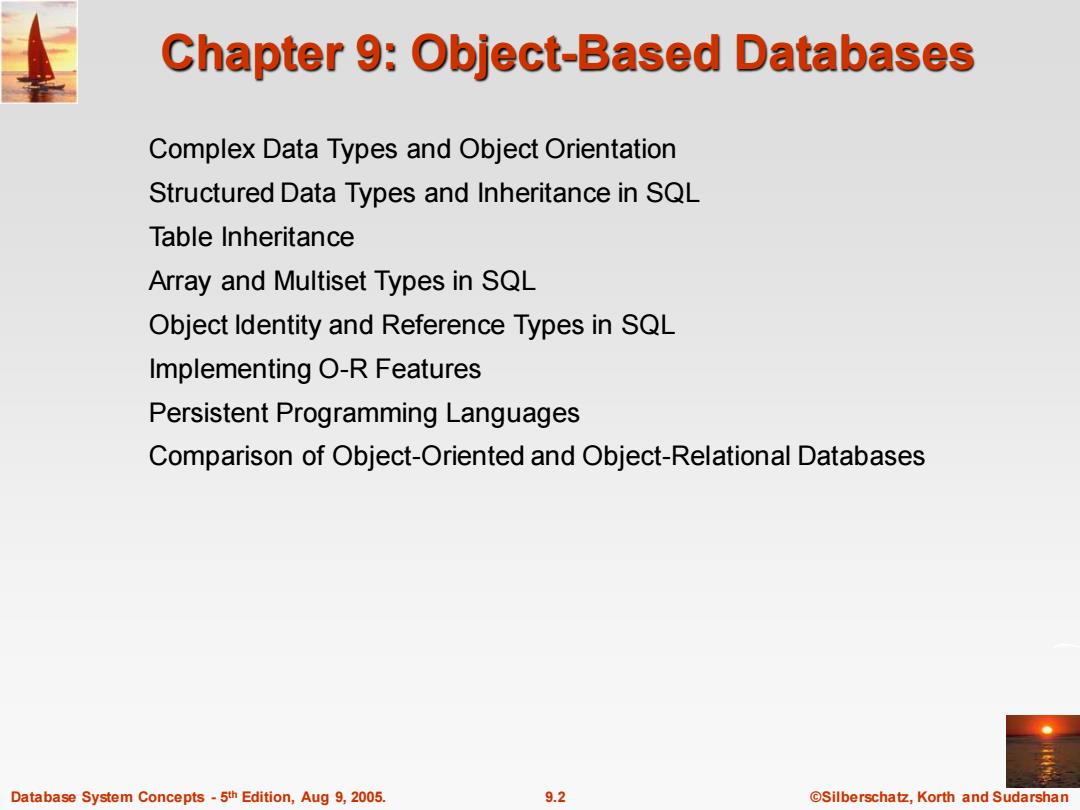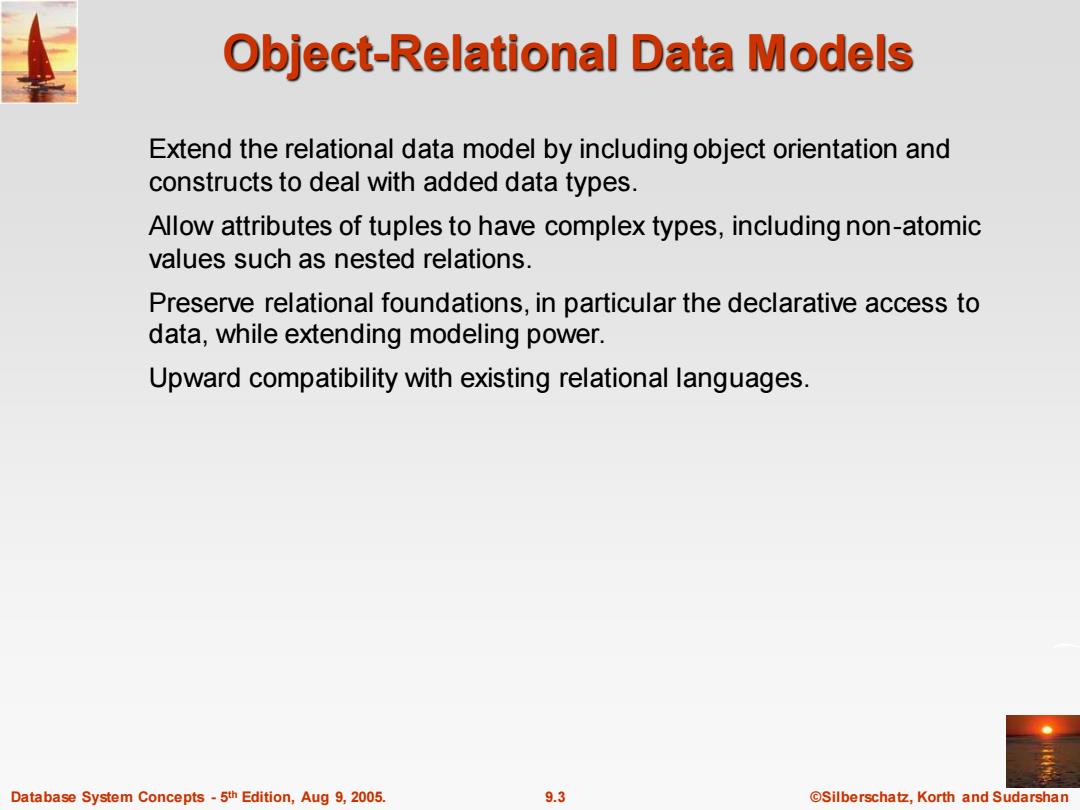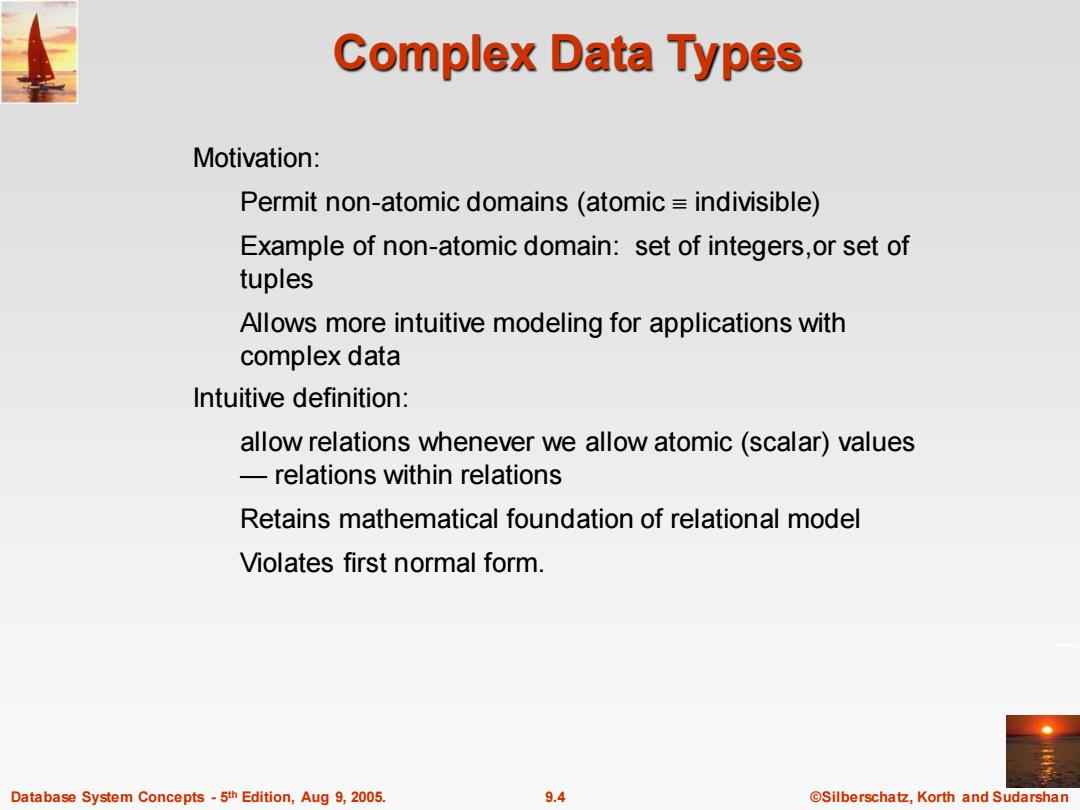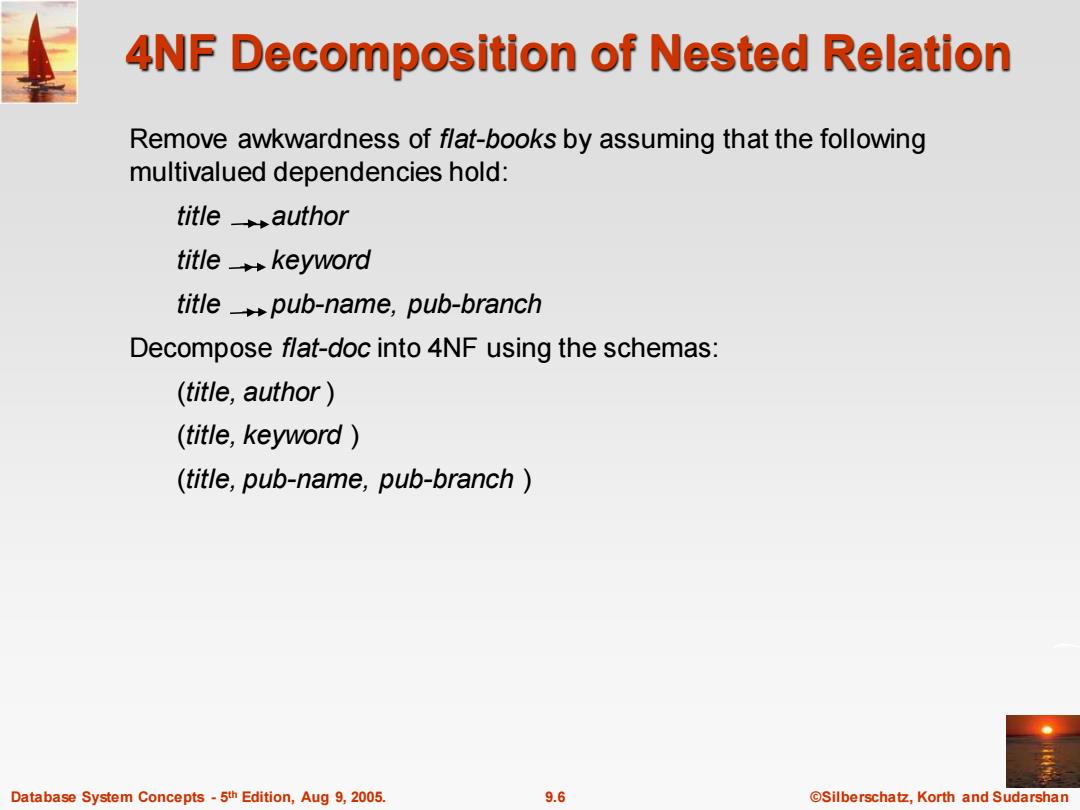
Chapter 9:Object-Based Databases Complex Data Types and Object Orientation Structured Data Types and Inheritance in SQL Table Inheritance Array and Multiset Types in SQL Object Identity and Reference Types in SQL Implementing O-R Features Persistent Programming Languages Comparison of Object-Oriented and Object-Relational Databases Database System Concepts-5th Edition,Aug 9,2005. 9.2 ©Silberschat乜,Korth and Sudarshan
Database System Concepts - 5 9.2 ©Silberschatz, Korth and Sudarshan th Edition, Aug 9, 2005. Chapter 9: Object-Based Databases Complex Data Types and Object Orientation Structured Data Types and Inheritance in SQL Table Inheritance Array and Multiset Types in SQL Object Identity and Reference Types in SQL Implementing O-R Features Persistent Programming Languages Comparison of Object-Oriented and Object-Relational Databases

Object-Relational Data Models Extend the relational data model by including object orientation and constructs to deal with added data types. Allow attributes of tuples to have complex types,including non-atomic values such as nested relations. Preserve relational foundations,in particular the declarative access to data,while extending modeling power. Upward compatibility with existing relational languages. Database System Concepts-5th Edition,Aug 9,2005. 9.3 @Silberschatz,Korth and Sudarshan
Database System Concepts - 5 9.3 ©Silberschatz, Korth and Sudarshan th Edition, Aug 9, 2005. Object-Relational Data Models Extend the relational data model by including object orientation and constructs to deal with added data types. Allow attributes of tuples to have complex types, including non-atomic values such as nested relations. Preserve relational foundations, in particular the declarative access to data, while extending modeling power. Upward compatibility with existing relational languages

Complex Data Types Motivation: Permit non-atomic domains (atomic indivisible) Example of non-atomic domain:set of integers,or set of tuples Allows more intuitive modeling for applications with complex data Intuitive definition: allow relations whenever we allow atomic(scalar)values -relations within relations Retains mathematical foundation of relational model Violates first normal form. Database System Concepts-5th Edition,Aug 9,2005. 9.4 @Silberschatz,Korth and Sudarshan
Database System Concepts - 5 9.4 ©Silberschatz, Korth and Sudarshan th Edition, Aug 9, 2005. Complex Data Types Motivation: Permit non-atomic domains (atomic indivisible) Example of non-atomic domain: set of integers,or set of tuples Allows more intuitive modeling for applications with complex data Intuitive definition: allow relations whenever we allow atomic (scalar) values — relations within relations Retains mathematical foundation of relational model Violates first normal form

Example of a Nested Relation Example:library information system Each book has title, a set of authors, Publisher,and a set of keywords Non-1NF relation books title author-set publisher keyword-set (name,branch) Compilers (Smith,Jones) (McGraw-Hill,New York) [parsing,analysis) Networks Jones,Frick) (Oxford,London) (Internet,Web} Database System Concepts-5th Edition,Aug 9,2005. 9.5 ©Silberschat乜,Korth and Sudarshan
Database System Concepts - 5 9.5 ©Silberschatz, Korth and Sudarshan th Edition, Aug 9, 2005. Example of a Nested Relation Example: library information system Each book has title, a set of authors, Publisher, and a set of keywords Non-1NF relation books

4NF Decomposition of Nested Relation Remove awkwardness of flat-books by assuming that the following multivalued dependencies hold: title _author title_keyword title pub-name,pub-branch Decompose flat-doc into 4NF using the schemas: (title,author) (title,keyword (title,pub-name,pub-branch Database System Concepts-5th Edition,Aug 9,2005. 9.6 @Silberschatz,Korth and Sudarshan
Database System Concepts - 5 9.6 ©Silberschatz, Korth and Sudarshan th Edition, Aug 9, 2005. 4NF Decomposition of Nested Relation Remove awkwardness of flat-books by assuming that the following multivalued dependencies hold: title author title keyword title pub-name, pub-branch Decompose flat-doc into 4NF using the schemas: (title, author ) (title, keyword ) (title, pub-name, pub-branch )